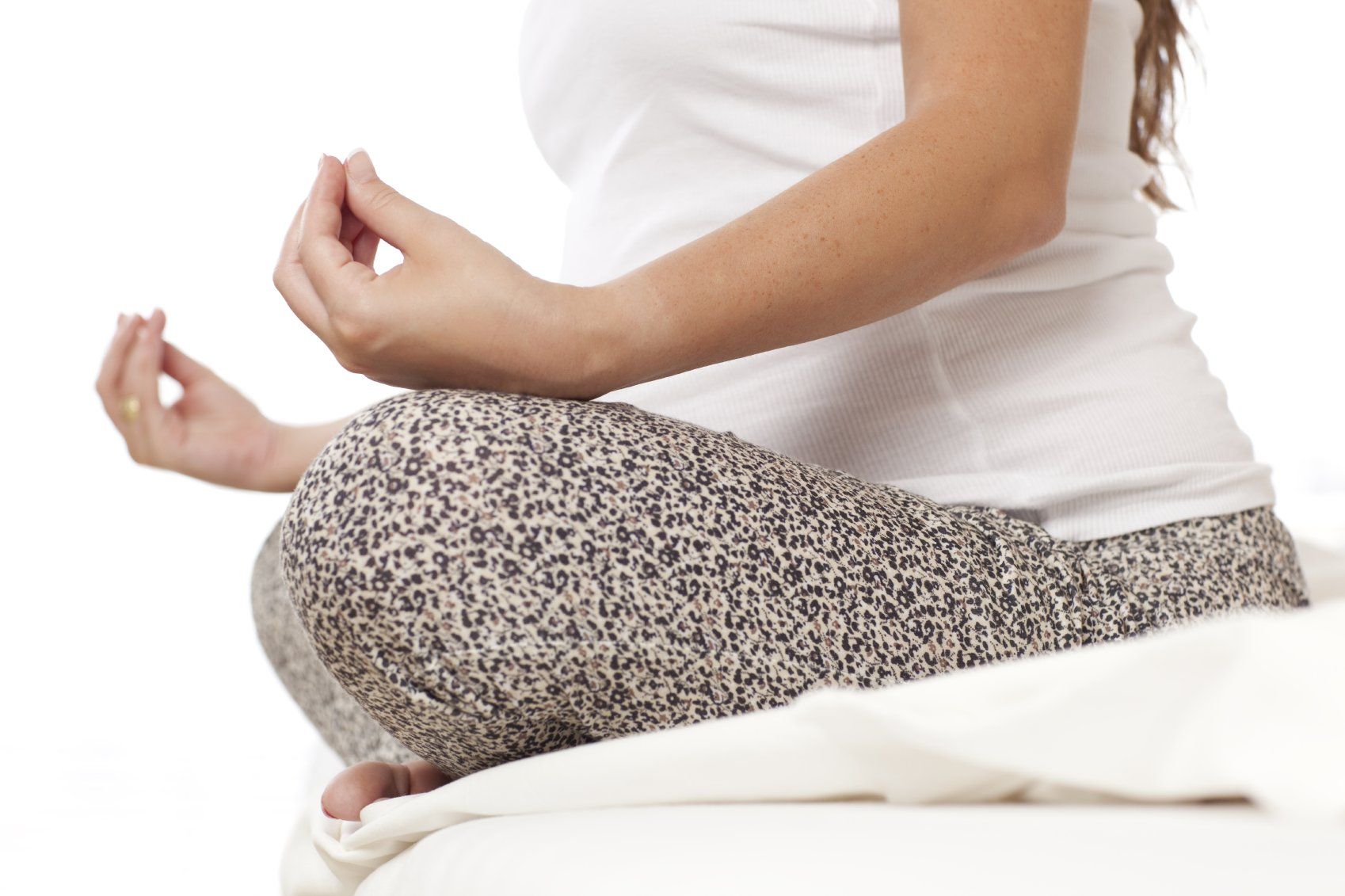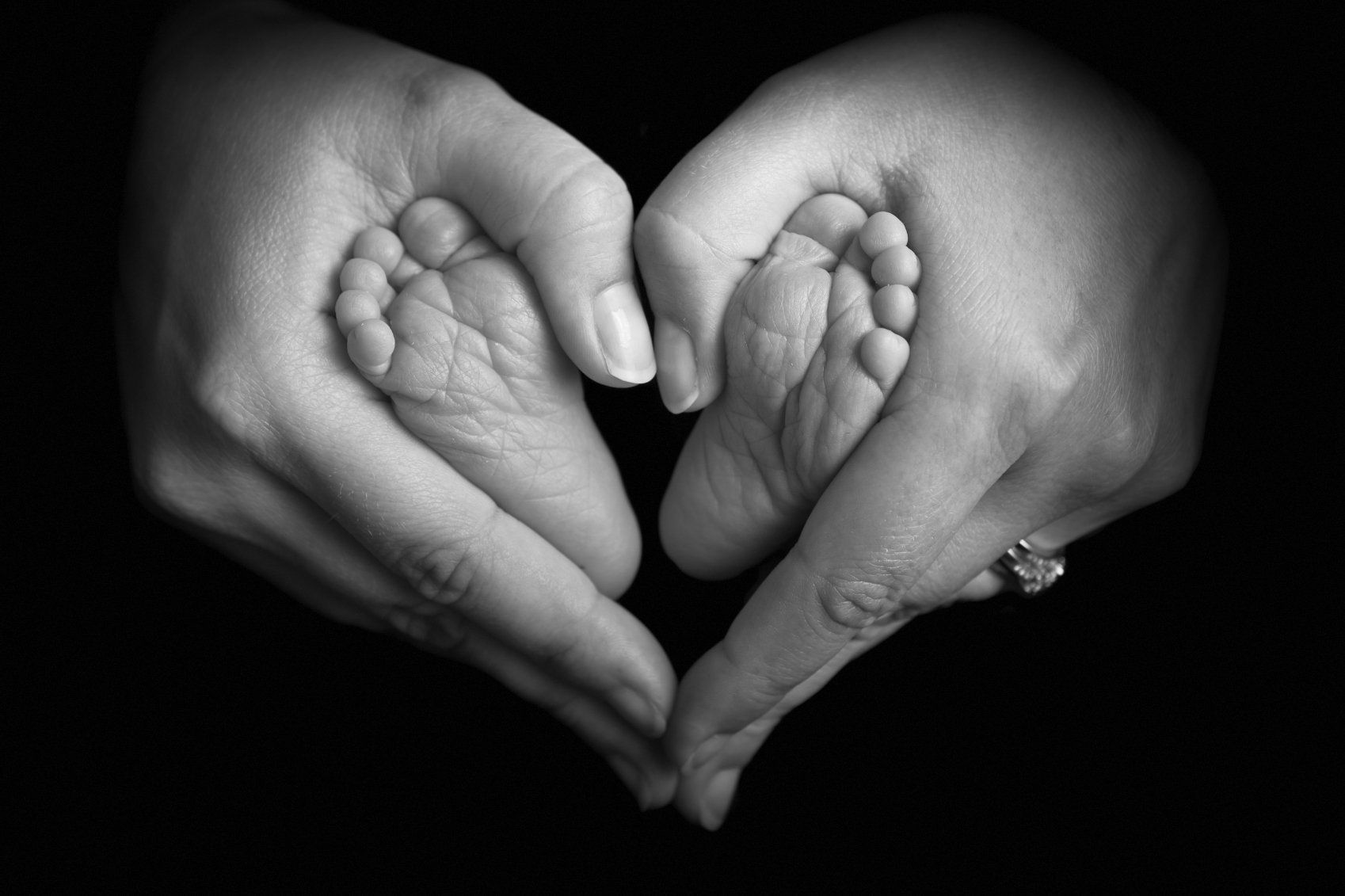Can I practise yoga in the first trimester of Pregnancy?
Words from a Pregnancy Yoga teacher and two time mum

In short, YES* you can do yoga throughout pregnancy, indeed it can be really beneficial. BUT please read on!
Yoga encompasses much more than the physical poses which many might first think
of, so even when these postures might not be suitable, meditation and breath
work are safe for all.
As a Pregnancy Yoga teacher I am often approached by people early on in pregnancy asking if they can join my classes. These group sessions are recommended from 14 weeks of pregnancy, for multiple reasons. (This is after when you may have had a first scan and are feeling a bit more energy.) However, what do to before this? There is conflicting or scarce information out there as to what we can or should, and should not do in early pregnancy.
There is lots of advice to keep active during pregnancy. The NHS website says this “Keep up your normal daily physical activity or exercise (sport, running, yoga, dancing, or even walking to the shops and back) for as long as you feel comfortable. Exercise is not dangerous for your baby. There is evidence that active women are less likely to experience problems in later pregnancy and labour.”
If you look online you will find yoga as a top recommendation for exercise during pregnancy. Absolutely it is great, as it is low impact, can help strengthen the body and stretch out tensions that come with changing bodies and general life stresses! It also helps prepare the body for birth.
However, around 6 weeks, when the head, heart, circulation and spine are forming is when nausea and fatigue may kick in. This is due to a flood of hormones including progesterone and oestrogen. Now is the time that the pregnancy is becoming established and although baby is still tiny (around the size of a kidney bean at 7 weeks) massive changes are happening in your body. The embryo is attaching itself to the lining of the uterus. The tiredness is a sign to take care of your body and your pregnancy. Lean into the urge to rest, now is not the time to start a new exercise regime. Focus on nurture and rest.
Nurture and rest can be an integral part of yoga. It is more than just the physical postures we see online. Some of my recommendations which are safe and beneficial to all are breathing, relaxation and meditation.
Breathing
Find a comfortable sitting or laying position where you will not be disturbed. Tune into your natural breath. Do not hold or force the breath during pregnancy.
o“Relaxation breathing” is beneficial at all stages of pregnancy. As you breathe in count the inhale, and as you exhale, count for a little longer (without straining). Slightly lengthening the exhale slows the heart rate and keeps us calm.
oBreathing away the sickness – if you are feeling nauseous a technique we can use is to imagine as we exhale the sickness leaving the body. Inhaling seeing the fresh clean air cooling and cleansing us. Repeat for a few round.
o Other practises are suitable such as theFull lung breath, but avoid anything with holding or forcing the breath.
Relaxation and meditation
Spending time in deep relaxation can help with feelings of overwhelm and exhaustion, and allows the body time to rest and rejuvenate. Especially if you are not sleeping well it is time for the body to heal like we do in sleep.
Find a comfortable position, which may be on your back in early pregnancy. You can support under the knees with blankets or a bolster. If you open the knees wide ensure they are fully supported underneath. If the mind wanders don’t be discouraged and gently bring the attention back to whatever your focus is. Know that you are resting the body.
oYou could practise relaxing the muscles by progressively working up or down the body in your mind
oYou could take time to connect with your pregnancy and your growing baby
oYou could listen to some soothing music
Movement
If you have already been practising yoga and feel well then you can continue. Yoga encourages a mindful awareness of the body so it will help us beyond the mat with our posture, energy and general life! However do listen to your body’s signals and rest or adapt as needed. If you feel sick or tired listen to these cues.(Please note if you are at high risk of miscarriage or have been put on bed rest then stick to the breathing and relaxation).*In a class setting your yoga teacher should be able to make adjustments for you, or they may be able to recommend someone else who can. In the first trimester most yoga poses (asana) are safe in theory, but as your baby and bump grows you will want to start to avoid laying on your front, laying on your back for long periods, deep twists, deep back bends, double leg lifts and jumping between poses. If you have a fast practise you may need to slow down, watch the heart rate and drink more water.
If you are new to yoga and/or looking for some moves helpful during pregnancy here are a few suggestions. I would recommend doing under the guidance of an experienced teacher. Stop if there is any pain in these moves.
oPelvic awareness and alignment to gain an awareness of the pelvis. In sitting or laying on your back place your hands on your pelvis. As you exhale gently tuck under your tailbone, inhale moving back to neutral. You could try small circling movements if that feels okay.
oShoulder stretches to ease tension in the shoulders. This could be shoulder shrugs, or taking finger tips to shoulders and circling the elbows.
oSitting stretches that can be done at a chair during work. Such as open twists to look over each shoulder, reaching up with the arms, and supported side bends by taking one hand down to your chair (or floor) as you reach gently over with the other
oMudras (hand gestures) – there are several lovely mudras for pregnancy. One I particularly like in the early stages is to create a lotus shape and imagine sending a wish to your growing baby.
If you experience feeling light-headed, it could be low blood pressure. Take care in forward bends and come up slowly to standing. You may also notice the need to empty your bladder more often. This a combination of the uterus pressing on the bladder (yes baby is small but is still in the pelvis) and the relaxing effect of hormones. Yoga can help this too, with poses to give space such as butterfly or tailors pose. As with the relaxation you might like to support under the knees.
Often by 12-14 weeks most of the sickness and tiredness has passed, and people start to feel more like themselves, which can be a good time to get more active. This is when pregnancy or prenatal yoga sessions often start. By now I hope you have some ideas of what would be helpful in your first trimester to nurture yourself and your growing baby, and can look forward to the rest of your pregnancy journey.
*Please note that yoga during pregnancy is best practised with a trained teacher. Any exercises recommended here are undertaken at your own risk.
Amber teaches Prenatal, Postnatal and Hatha Yoga in Norwich, see www.yogawithamber.co.uk or contact amber@zenmuma.co.uk for more information














